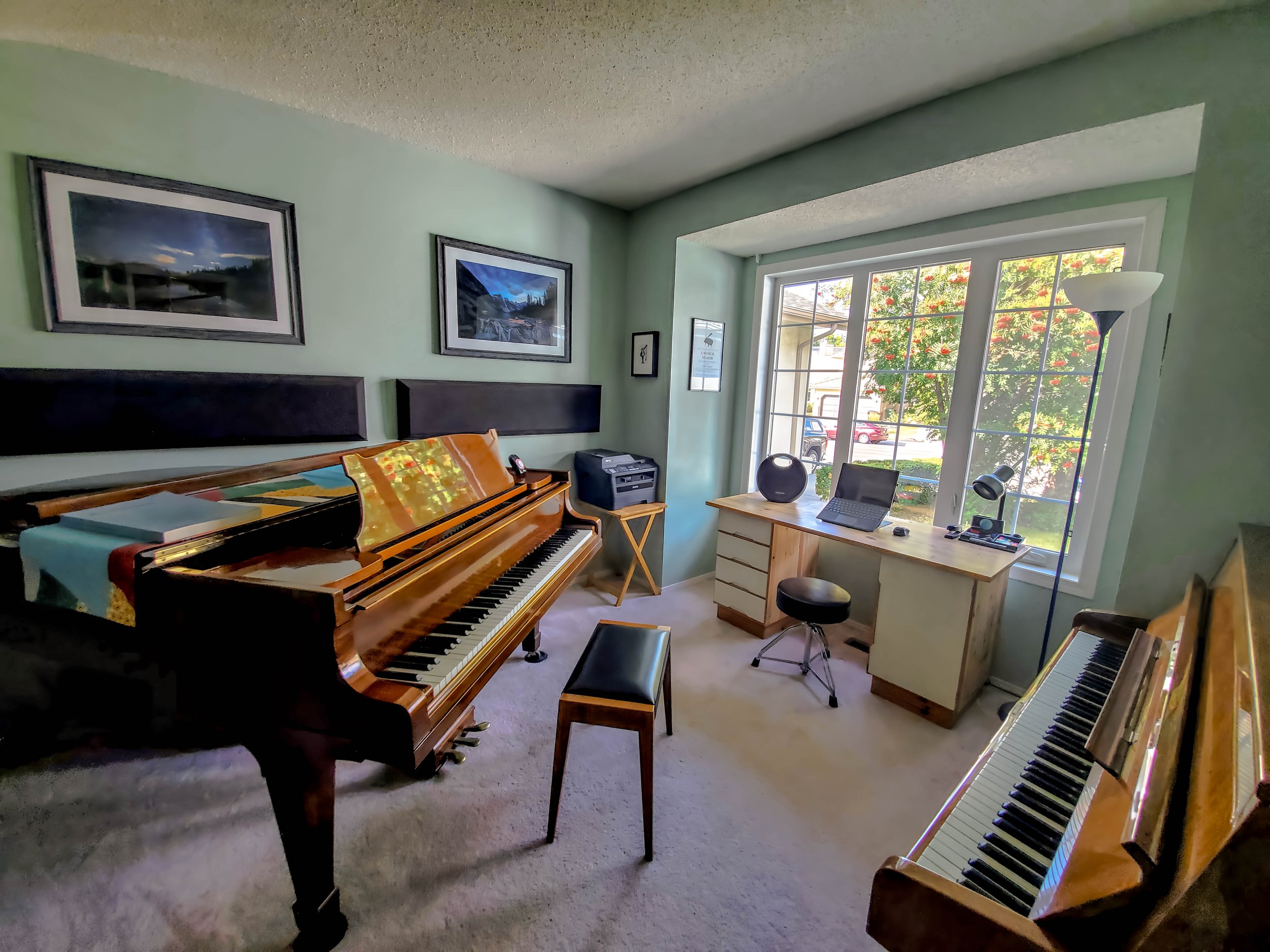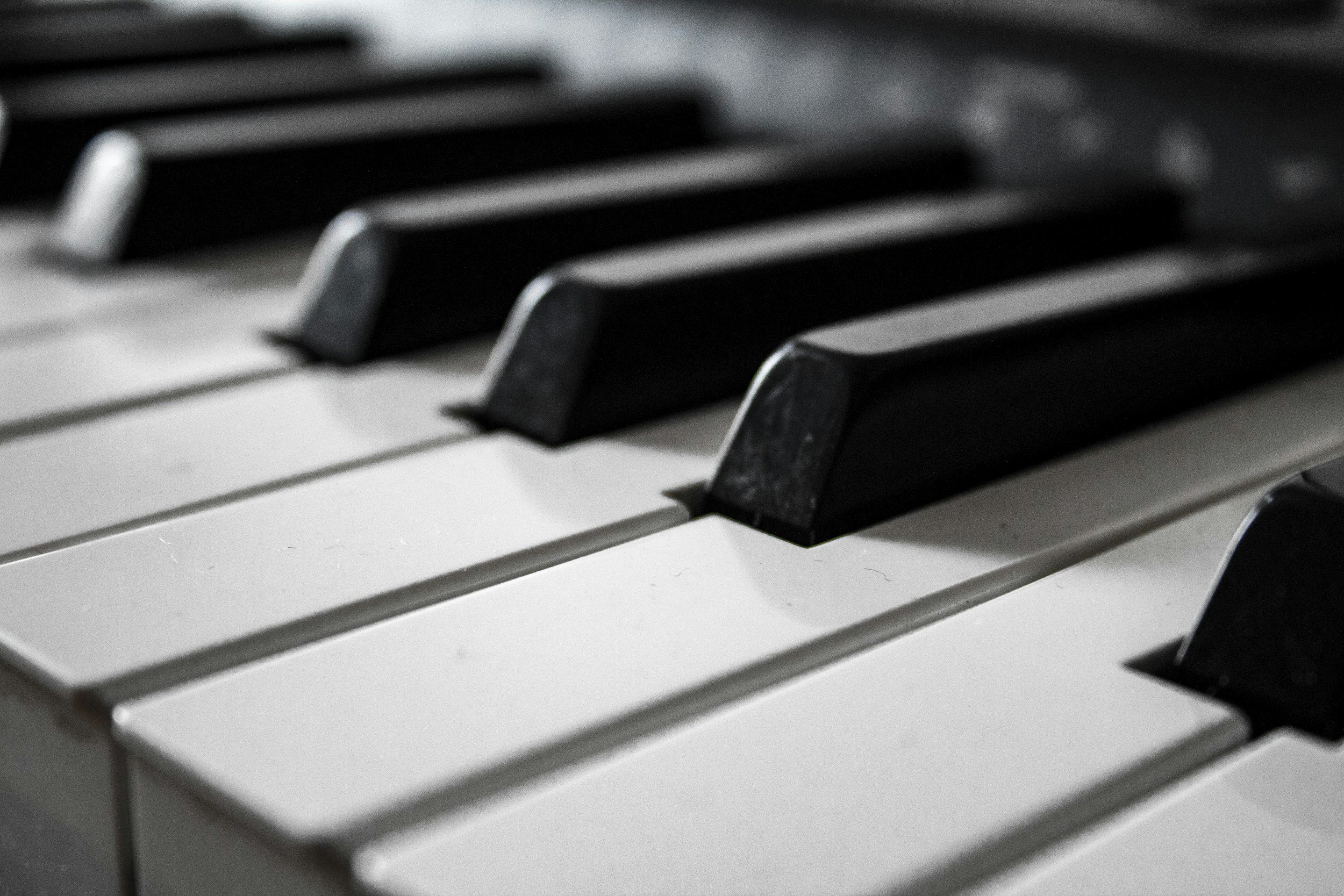
The Studio
Carlo’s Signal Hill studio in Southwest Calgary is optimized for a musically immersive learning environment. Two world-class acoustic pianos are available: a Steinway and Sons grand piano and German-made Sauter upright piano. Ample natural light illuminates the room with its frosty mint walls, creating a calm and bright ambiance. Artwork and framed landscapes line the walls, offering a repose from focus and mental exertion. A high-fidelity audio system provides premium sound while listening to or studying recordings. Comfortable and adjustable benches accommodate students of various heights, and an adjustable footstool is available for those still growing up.

Tracy L.
“I’m glad I found a teacher as passionate, friendly, and knowledgeable as Carlo. My daughter Saige started piano lessons with Carlo when she was eight years old and has advanced to level 5 piano pieces and level 8 technique after studying with him for only one and a half years. Carlo consistently encourages her to push her abilities so that she can reach her potential and grow. For example, after only nine months of lessons, she passed the level 1 exam with first-class honours and was playing level 3 pieces.
Carlo’s studio has lots of opportunities to perform on stage in recitals, concerts, and piano camps. Saige performed in her first recital after only six months of studying with Carlo. There are more than ten performances we have attended yearly.”
Lessons
Piano lessons occur once per week at a consistently scheduled time. More than just a weekly event to learn, a lesson should be exciting, encouraging, and engaging. It’s an opportunity for a student to share what they have diligently practiced and improved upon since the last lesson, and where they receive direction toward the next steps in their musical journey.
Parents are asked to be non-participating observers during the lessons for the first few years of instruction or until age eight or nine so they may be able to guide their child through effective and proper practice at home. The practice techniques, drills, and details taught in class must be carefully applied to practice at home to facilitate efficient practice sessions and to maintain consistent progress. The saying ‘practice makes perfect’ is just not true; perfect practice produces proficiency. Therefore, successful music education is a team effort between the teacher, student, and parent.
I often introduce students to several pieces or entire collections I intuit they would enjoy learning and playing and I’ll ask them to add any music they desire to play to their ‘bucket list of pieces/songs’. They are encouraged to take initiative with their learning, to envision the musician they wish to become, and I’ll be there each step of the way to help make that desire a reality. I help them set realistic and achievable goals between lessons and for their studies throughout the year and then we lay out a plan to get there - together.
Learning Outcomes
Piano lessons involve more than just playing the piano. Lessons may comprise any of the following activities and subjects:
Piano Repertoire: music from various genres such as classical, jazz, movie themes, etc. that are suited to the student’s age, ability, and interests.
Technique: exercises to develop dexterity and facility in the fingers, such as scales, chords, arpeggios, specialized drills, etc.
Theory: the study of musical notation and how music is written and organized; how to write scales, chords, melodies, and harmonies on the staff.
Sightreading: the practice of reading a piece of music for the first time, which develops the ability to learn new music faster and more effectively. Students will learn how to develop patience, discernment, and focus through their sightreading exercises.
Ear training: for beginners, identifying the distances between two notes; recognizing a chord as major or minor; hearing and playing a short melody or clapping back rhythms; for advanced students, discerning more complex chords and rhythms; playing back a melody of a tune, which is known as ‘playing by ear.’
Improvisation: taking a fragment of music or an existing piece of music and playing it according to one’s style and imagination, for example playing ‘Für Elise’ in a jazzy manner, or ‘Happy Birthday’ in the style of Chopin.
Composition: creating a unique melody and harmony in the form of a piece or song.
Duet: a piece of music for two players on one piano, either between me and a student or between two students.
“I enjoy my performances and lessons with Carlo because he always makes me feel like I’m being challenged. He also makes me feel proud and confident in my abilities and performing on stage. I want to become a piano teacher one day and inspire others with my music.”
| Saige He |